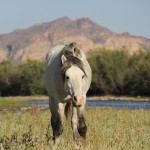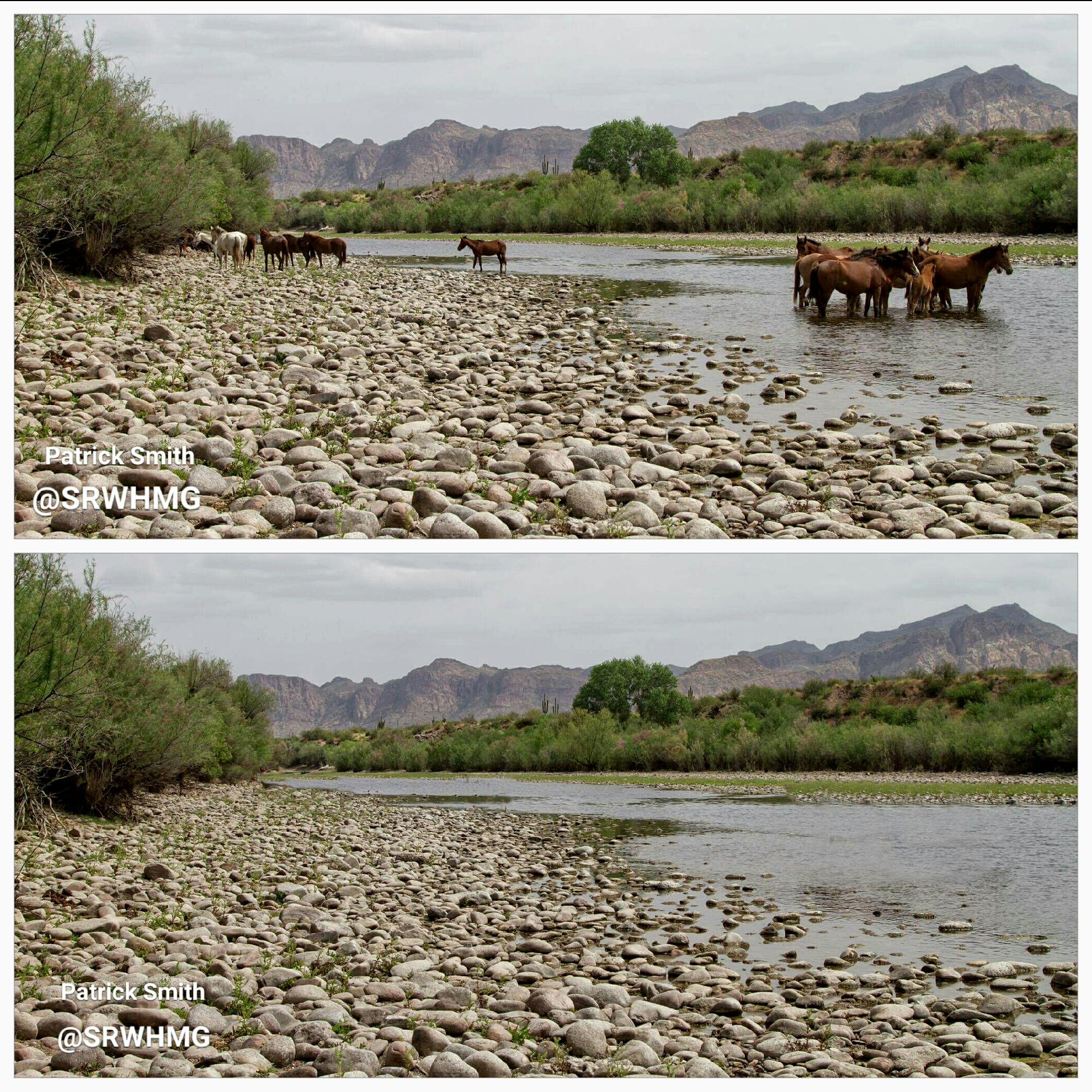
The position we witness regularly, that wild horses and burros have little or no value on our public lands, is quite outdated and very offensive to the large majority of the American public who do see value in wild horses and burros. Please let us explain.
While it is certainly detrimental to wild horses and burros that they are not putting money directly into anyone’s pockets (if they did, their story would certainly be much different), it does not mean that they have no value.
Wild horses and burros hold not only great recreational, aesthetic, ecological, emotional, historic, cultural, educational, genetic and scientific value, but indeed they hold real economic and financial value to the areas where they exist as well as to our country as a whole.
Recreational and tourism value:
The first and most obvious value is Eco-tourism. A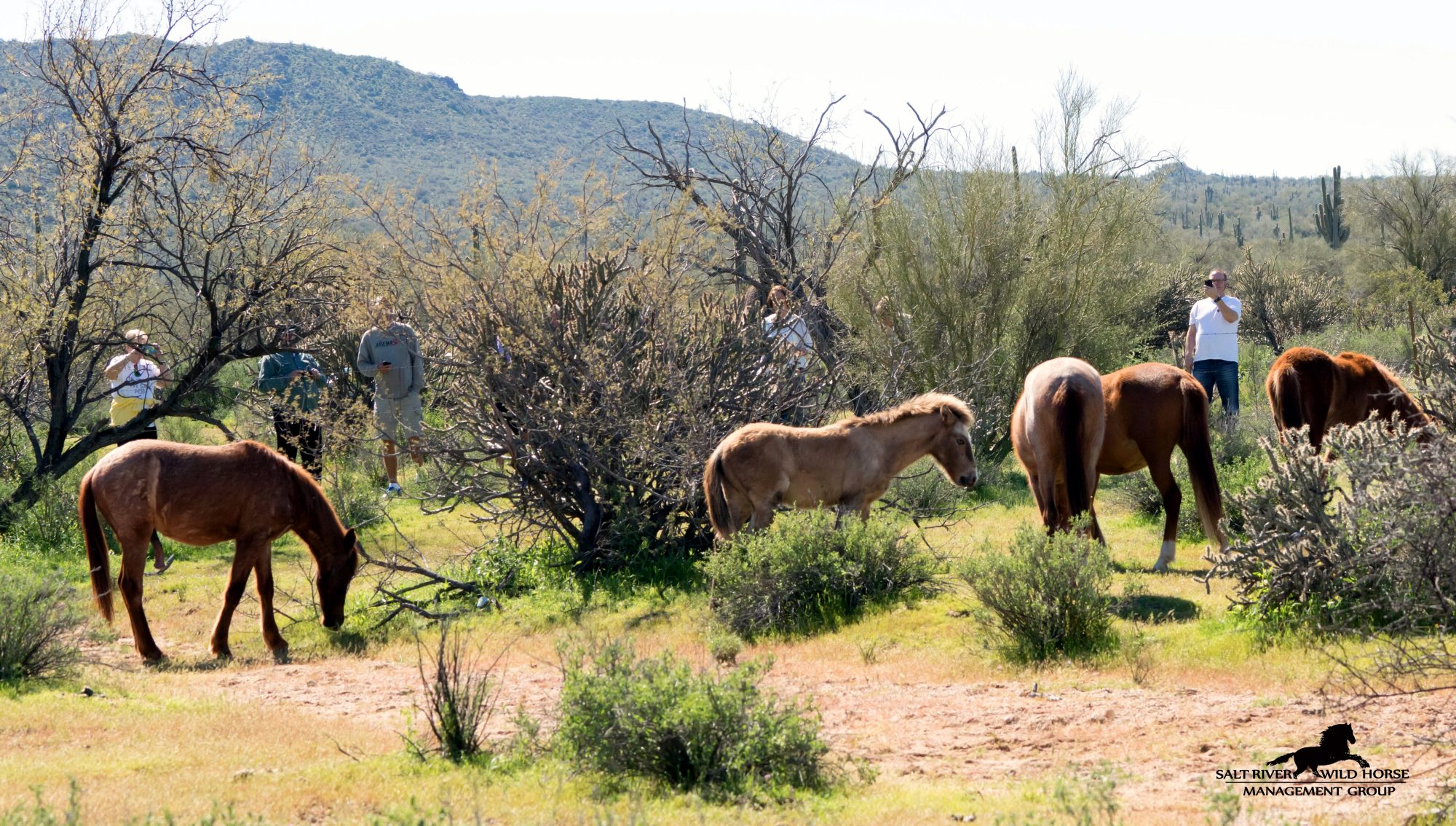 wide variety of recreational visitors frequent areas where wild horses and burros exist for that one specific reason; to experience the wild animals in their natural habitat.
wide variety of recreational visitors frequent areas where wild horses and burros exist for that one specific reason; to experience the wild animals in their natural habitat.
The Salt River wild horses bring tens of thousands of visitors to the Tonto National Forest that otherwise would have no interest in the area. The wildlife viewing industry is growing fast; $75.7 billion was spent nationally for trips and equipment by over 91 million people in 2016 (published by the U.S. Fish and Wildlife Service).
Eco- tourism of America’s wild herds is an economic resource with huge beneficial economic implications; the opportunity to view wild horses is unique to America and brings the feeling of connection with the old Wild West. It also draws tourism from abroad to our country; just like elephants and giraffes are an economic asset to Africa, so are wild horses and burros to America.
Economic value (not the same as recreational value) :
Wild horse tourism of course translates directly into additional revenue for the areas where they exist, but it also translates into positive economic value for many artists who sell their art and photographs of the wild horses as their means of living.
In addition, Real Estate brokers assess that wild horses increase property values for real estate in the area, which means real dollars in people’s pockets.
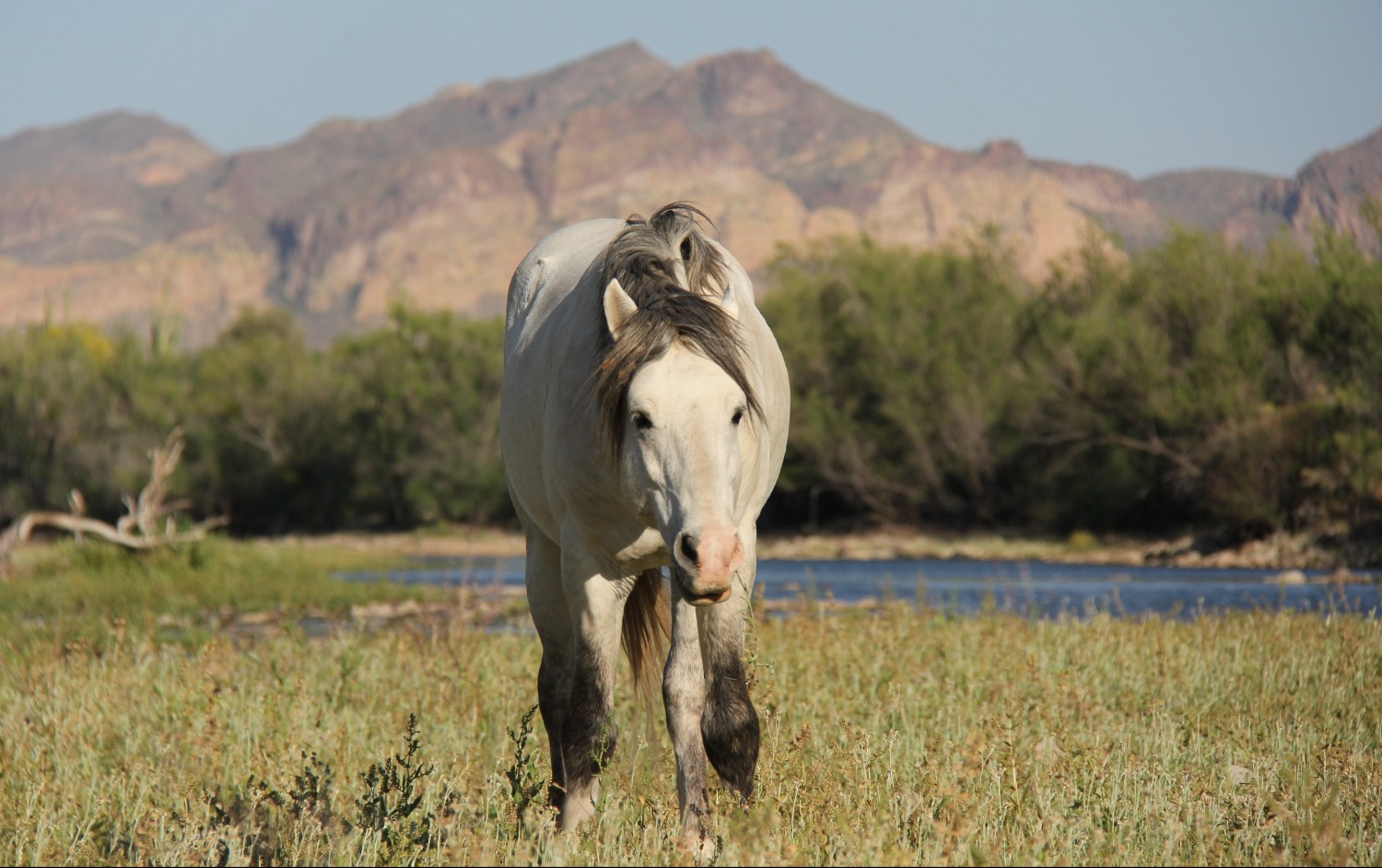
Ecological value:
Science exists to support that wild horses have many beneficial impacts on their environments and other science exists that wild horses have negative impacts on their environments. Depending on who you talk to, wild horses are either amazing for the environment or they are detrimental to it.
More likely, wild horses have both positive and negative impacts on their environment, just like ANY other species. However, since it has been proven that they have lived here for many centuries, it is unlikely that all of a sudden detrimental changes will occur in their habitats now.
The stretch of the lower Salt River inhabited by the wild horses is one of the most biologically rich areas along the entire 200-mile river, in spite of the many human caused challenges it faces.
Photo-documentation accumulated by members of the Salt River Wild Horse Management Group supports this observation with evidence over long periods of time. The evidence shows healthy and growing trees, seedlings sprouting from horse manure, abundant plants and flourishing wildlife diversity in the very area on the river where the horses have roamed for hundreds of years, the bald eagles are also thriving in this particular area and have doubled in the last ten years according to Game and Fish. Is this all a coincidence or is it is possible that wild horses have beneficial impacts?
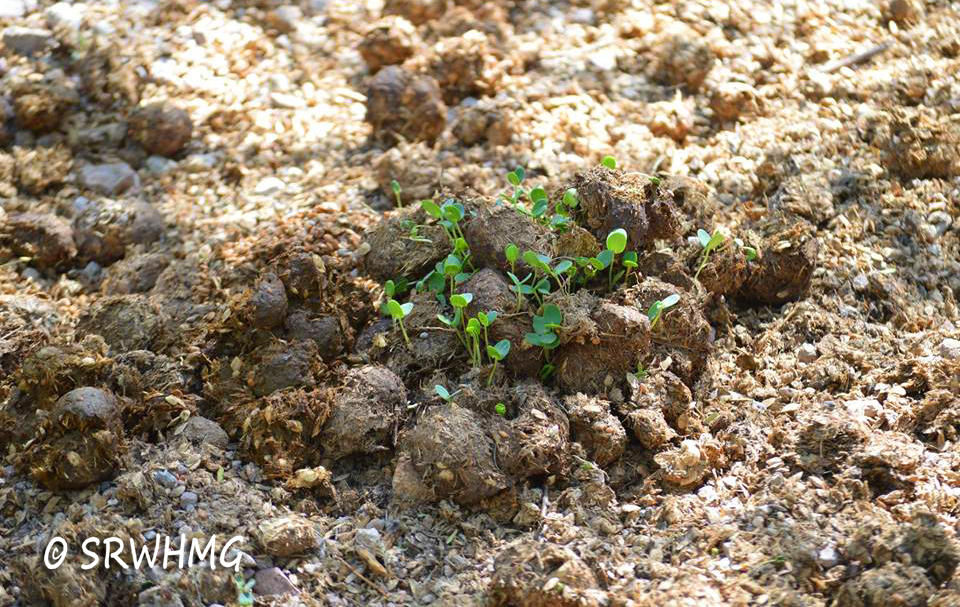
- The large mesquite trees are shade trees with great importance to all wildlife, these trees rely almost 100% on their seeds being spread through horse manure, which also provides the bed for fertilization.
- Horse manure improves overall fertility of the soil which promotes all green growth in the area.
- Wild horses significantly reduce the fire danger by keeping dry flammable grasses and underbrush from growing too tall and becoming a fire hazard.
- Overabundant eel grass in the river can become a problem in the summer months when it clogs the river, the wild horses are the only species reducing the river eel grass, in doing so they keep the river from becoming stagnant.
- Wild horses provide a diet for predators and scavengers; such has mountain lions and bob cats as well as coyotes, foxes and vultures.
- The impact of wild horse hooves may help improve aeration of the humus and keep fungi down.
Emotional value:
Many long time locals are extremely attached to the wild horses they grew up with. Many new residents say they are the reason they moved to the area. The unprecedented outpouring of letters and calls when they were threatened with removal, attest to the emotional value that the wild Horses represent not only to local residents, but to thousands of Arizonans and American citizens as well. There is a deep meaning, connection and value that wild horses foster in Americans. People find solace and peace in spending time with them.
While some may dismiss emotional value as something negative, undoubtedly no progress in history would have ever been made, without emotion.
The value that the local and statewide community places on the Salt River Wild Horses is a micro-example of the same value that the majority of Americans see in all of the wild horses of America. The outpouring on a national scale in just the last year of letters, emails, phone calls, news coverage, documentaries, rallies, lawsuits, as well as a letter from over 54 Congressmen demonstrates America’s will to fight for and preserve their rightful heritage, the icons of the American Wild West.
As a test, the Salt River Wild Horse Management Group asked people to look at two pictures and pick which one they liked better. One picture is of the Salt River with the horses and the mountains in the background and one is the same picture but now without the horses in the river.
The picture of the river PLUS the horses was preferred by 1700 people who responded in 24 hours, as opposed to two people who said they liked the river better without the horses. This proves that the horses, just by being there, add value to the natural scenery.
Testimonials:
“I love the picture with the horses. They represent what Arizona is, the love of life and land. They are a natural beauty, just like the Grand Canyon, they are a breath of yesterday and a hope for tomorrow to me. I love them and all they ask is for life, nothing more. ”
Jill Ray; “One can see something similar to the bottom photo in many many places, but..the top one is a wonderful rarity, and of course my favorite!”
Jack Kramer: “I love horses at the river, there is no other reason to drive 2000 miles each spring. We have a river but no horses here in Minnesota.”
Educational value:
Teachers can teach their students from history books about wild horses roaming the American plains hundreds of years ago. Then, after classroom time, the teachers can take their students out on the Salt River where they can still witness wild horses for themselves.
Art students and teachers often come to the river to teach and learn techniques for painting horses. Many students at the local high schools have written essays on the Salt River Wild Horses. Educational seminars are taught about the wild horses. Wild horses are sought after subjects for education.
Genetic and Scientific Value
Less research is currently available about wild horses than about wild zebras in Africa. More research is needed in regards to the adaptations, health, hoof strength, as well parasitic resistance in wild horses. Such research can benefit veterinary solutions for the entire horse industry. In addition more studies about behavior and family structures and also birth rates and death rates is needed. Wild horse DNA and genetics could also prove of utmost importance in wild horse research. Many things may never be discovered unless we have the opportunity to study them.
Scarcity value:
Wild horses still exist in 10 states. In some of those states the population is low like in Arizona, where only approximately 500 remain on our public lands. (that does not include Indian nations and reservations). While in some areas in Nevada there may be a large concentrated number of wild horses, they are a rare sight (scarse) in the rest of America as most States have none. On a national scale we have approximately 60,000 left in the wild according to the BLM (Bureau of Land Management), however no unbiased count is currently available.
That number is actually very low when you understand that that number is for the entire United States. To put that in perspective for example please compare other species national numbers; 36 million deer, 1 million elk, 670,000 pronghorn antelope and 70,000 bighorn sheep who were deemed ” a species of concern” until just last year.
In the federal Endangered Species Act the term species of concern is not defined, but many agencies and organizations maintain lists of at-risk species. Many time a species with less than 50,000 specimens constitutes a species of concern. So if wild horses were any other species, they would be dangerously close to becoming a species of concern.
No, we will not any time soon be overrun with wild horses in the streets. However, we do agree that wild horse populations need to be managed responsibly for the area’s where they exist for an optimum natural balance. Very similar to the protected Saguaro cactus, of which we have many thousands in Arizona, there can be many wild horses in some locations but none in others. Therefore wild horses are local treasures and have a high scarcity value.
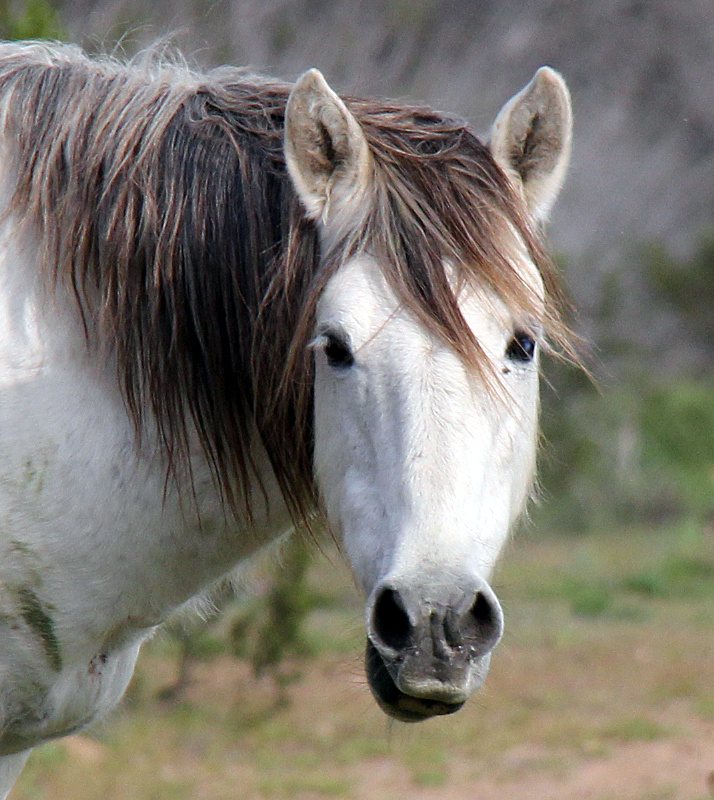 Individual value:
Individual value:
While we are placing material and emotional value on these horses from many different points of view, we should not fail to see that the true value of any living being is not dependent on the opinion we may have of it.
Each individual life and the quality of it needs to be considered and the value of compassion should never be underestimated.
Albert Einstein, who has had a limitless influence on our modern day society, knew it when he said: “The notion that animals have no rights and our treatment of them bears no significance is a perfect example of the crudity and barbarity of western society.”
Historic and cultural value:
History reports that Spanish explorers brought over Spanish horses between 1519 and 1600. The Western plains in the 1800’s once were home to millions of wild horses as well as millions of buffalo. When our ancestors arrived in wagons to settle in America, they found wild horses were part of the scenery. On August 14, 1805, Meriwether Lewis commented on the Shoshones’ herds: “Most of them are fine horses. Indeed many of them would make a figure on the South side of James River or the land of fine horses”. In 1834 George Catlin painted “wild horses at play”, and wrote an account of thousands of wild horses on the plains that were as tricky to capture as wild deer.
But by the 1850’s much like the buffalo, the slaughter of wild horses began. The US Government helped the ranchers and settlers as well as the Indians get rid of the wild horses. In two centuries of heavy persecution wild horse numbers dwindled from millions to fewer than 30,000 in 1971, which is when Congress passed the WFRHBA (the Wild Free Roaming Horse and Burro Act) in order to declare them an integral part of the American landscape and preserve them for future generations.
Wild horses are an important living remnant of days long gone. We settled this country on the back of horses, they plowed our fields and they fought our battles. They have been part of both Native American as well as early American culture for centuries. But unlike the buffalo, we still have the opportunity to preserve this living piece of our American history, forever.
